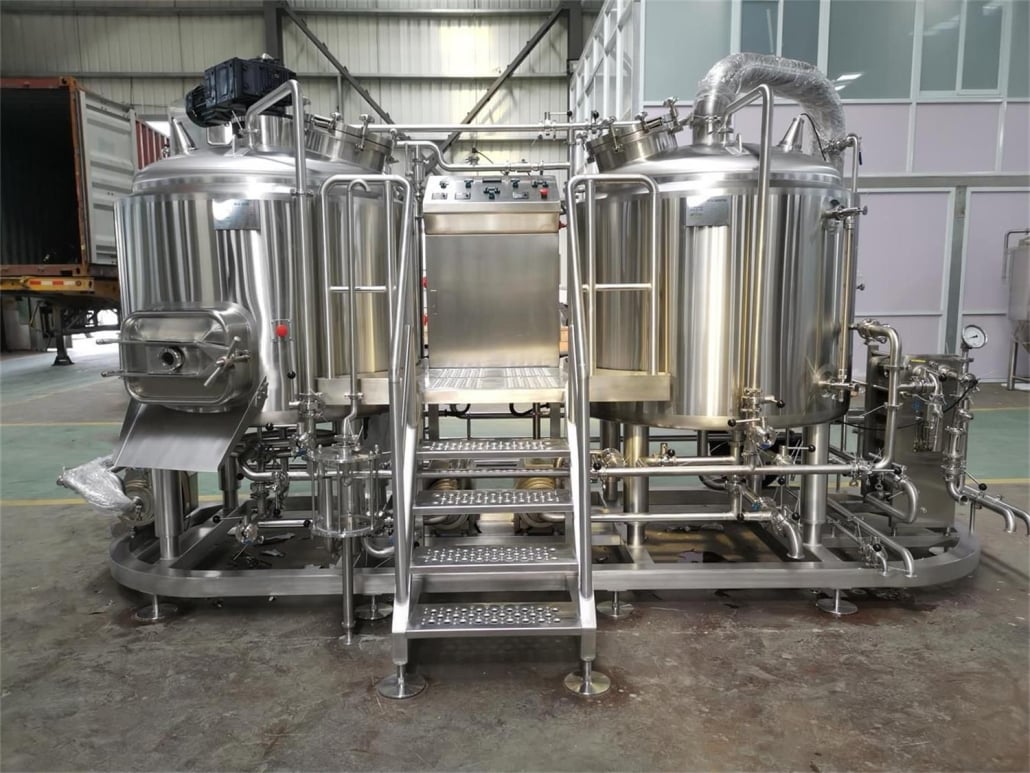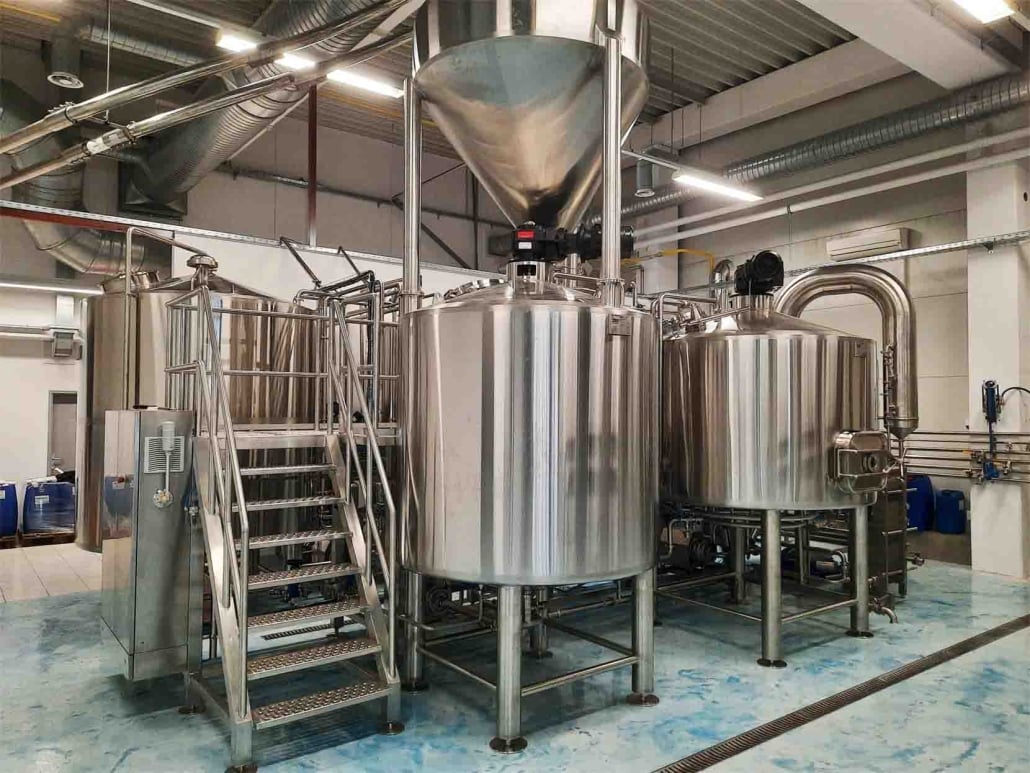Craft Brewing Equipment
Craft brewing is more than just a hobby for many; it’s a passion and an art form. For those looking to dive into the world of craft brewing, understanding the equipment is essential. This comprehensive guide will walk you through everything you need to know about craft brewing equipment, from an overview of the basics to detailed tables comparing different options. We’ll also delve into the brewing process, installation, operation, maintenance, and tips for choosing the right supplier. By the end of this guide, you’ll be well-equipped (pun intended) to start your brewing journey.
Overview of Craft Brewing Equipment
Craft brewing has grown significantly over the past decade, with more people getting interested in producing their own beer at home or starting small breweries. Craft brewing equipment ranges from basic homebrew kits to sophisticated commercial systems. The choice of equipment depends on your brewing goals, the scale of production, and your budget. This guide covers everything from the essentials to the more advanced tools needed for a successful brewing operation.
Key Components of Craft Brewing Equipment
- Brewing Kettles: Essential for boiling wort.
- Fermenters: Vessels where fermentation takes place.
- Mash Tuns: Used to convert starches into fermentable sugars.
- Cooling Systems: Important for bringing the wort to fermentation temperature.
- Cleaning Systems: Keeping equipment sanitary is crucial.
- Packaging Equipment: For bottling, canning, or kegging the final product.

Craft Brewing Equipment Guide
Brewing Kettles and Systems
Brewing kettles come in various sizes and configurations, from simple pots for homebrewing to complex systems for commercial operations. They are typically made from stainless steel and equipped with features like valves, thermometers, and false bottoms.
Fermenters
Fermenters are where the magic happens. They come in different shapes and sizes, including plastic buckets, glass carboys, and stainless steel conical fermenters. Conical fermenters are preferred for their ease of use and the ability to remove yeast and trub without transferring the beer.
Mash Tuns
Mash tuns are insulated vessels where the mash (a mixture of milled grains and water) is held at a specific temperature to convert starches into fermentable sugars. They often come with a false bottom to separate the wort from the grain.
Cooling Systems
After boiling, the wort needs to be cooled quickly to a temperature suitable for fermentation. This can be achieved with immersion chillers, counterflow chillers, or plate heat exchangers. Rapid cooling is crucial to prevent contamination and ensure a clean fermentation.
Cleaning Systems
Sanitation is critical in brewing. Cleaning systems include pumps, CIP (clean-in-place) systems, and various cleaning agents. Proper cleaning and sanitization prevent infections and off-flavors in the beer.
Packaging Equipment
Once the beer is ready, it needs to be packaged. This can be done using bottling buckets, bottle fillers, kegging systems, or even automated canning lines for larger operations. Packaging equipment varies greatly depending on the scale and desired packaging method.
Craft Brewing Equipment Types
| Equipment Type | Description | Usage |
|---|---|---|
| Brewing Kettles | Stainless steel pots with various capacities and features. | Boiling wort |
| Fermenters | Vessels made of plastic, glass, or stainless steel. | Fermentation |
| Mash Tuns | Insulated vessels with false bottoms. | Mashing |
| Cooling Systems | Immersion chillers, counterflow chillers, and plate heat exchangers. | Cooling wort |
| Cleaning Systems | Pumps, CIP systems, and cleaning agents. | Cleaning and sanitization |
| Packaging Equipment | Bottling buckets, bottle fillers, kegging systems, and canning lines. | Packaging the final product |
The Brewing Process
Brewing beer is a combination of science and art. Understanding the brewing process helps in selecting the right equipment and optimizing each step. Here’s a detailed look at the brewing process:
1. Milling
The process begins with milling the grains to break them open, exposing the starches that will be converted to sugars during mashing.
2. Mashing
Milled grains are mixed with hot water in the mash tun. This step converts the starches to fermentable sugars. The temperature and duration of the mash can affect the beer’s flavor, body, and alcohol content.
3. Lautering
After mashing, the liquid wort is separated from the spent grains. This step usually involves sparging, where hot water is sprinkled over the grains to extract as much fermentable sugar as possible.
4. Boiling
The wort is boiled, typically for 60 to 90 minutes. Hops are added during this stage for bitterness, flavor, and aroma. Boiling also sterilizes the wort and precipitates unwanted proteins.
5. Cooling
Post-boil, the wort needs to be cooled rapidly to a temperature suitable for fermentation. This is done using cooling systems such as immersion chillers or plate heat exchangers.
6. Fermentation
Cooled wort is transferred to a fermenter, where yeast is added. The yeast ferments the sugars, producing alcohol and carbon dioxide. This stage can take from a few days to several weeks, depending on the beer style.
7. Conditioning
After primary fermentation, the beer is conditioned to develop its flavors. This can be done in the fermenter or in the packaging vessel. Some beers require additional aging.
8. Packaging
Finally, the beer is packaged in bottles, cans, or kegs. Proper carbonation is achieved either naturally (priming sugar) or through forced carbonation.
Capacity, Space, Design, and Customization
| Aspect | Details |
|---|---|
| Capacity | Ranges from small 1-gallon homebrew systems to 30-barrel (or larger) commercial systems. |
| Space | Homebrewing can be done in small spaces, but commercial systems require dedicated brewing spaces. |
| Design | Equipment design can vary from basic setups to advanced automated systems with digital controls. |
| Customization | Many suppliers offer customization options to fit specific brewing needs and preferences. |
Craft Brewing Equipment Suppliers and Price Range
| Supplier | Equipment Offered | Price Range |
|---|---|---|
| Homebrew Supply | Homebrew kits, fermenters, bottling equipment. | $50 – $500 |
| Blichmann | High-end brewing systems, kettles, fermenters. | $200 – $10,000+ |
| Ss Brewtech | Innovative stainless steel brewing equipment, fermenters, mash tuns. | $100 – $5,000 |
| Anvil Brewing | Budget-friendly brewing systems, kettles, and accessories. | $100 – $2,000 |
| MoreBeer | Wide range of homebrewing and small commercial brewing equipment. | $50 – $20,000+ |
Installation, Operation, and Maintenance of Craft Brewing Equipment
| Aspect | Details |
|---|---|
| Installation | Proper installation is crucial for safety and efficiency. Professional installation is recommended for larger systems. |
| Operation | Operating brewing equipment requires knowledge of the brewing process and equipment specifics. |
| Maintenance | Regular maintenance, including cleaning and sanitization, is essential to ensure longevity and performance. |
Choosing the Right Supplier
| Criteria | Details |
|---|---|
| Quality | Ensure the supplier offers high-quality, durable equipment. |
| Support | Look for suppliers that provide excellent customer service and technical support. |
| Customization | Consider suppliers that offer customization options to fit your specific needs. |
| Reviews | Check customer reviews and testimonials to gauge reliability and satisfaction. |
| Price | Compare prices, but also consider the overall value and included features. |
Advantages and Limitations of Craft Brewing Equipment
| Aspect | Advantages | Limitations |
|---|---|---|
| Homebrew Kits | Affordable, easy to use, great for beginners. | Limited capacity, less control over the brewing process. |
| Commercial Systems | High capacity, advanced features, better control over brewing parameters. | Expensive, requires more space, complex installation and operation. |
| Stainless Steel | Durable, easy to clean, does not affect beer flavor. | More expensive than plastic or glass alternatives. |
| Plastic Equipment | Affordable, lightweight, easy to handle. | Can retain odors, less durable, not suitable for high-temperature processes. |

FAQ
What is the best material for brewing kettles?
Stainless steel is the best material for brewing kettles due to its durability, ease of cleaning, and lack of interaction with the beer.
How often should I clean my brewing equipment?
It’s essential to clean your brewing equipment thoroughly after each use to prevent contamination and off-flavors.
Can I start brewing commercially with homebrew equipment?
While you can start small, commercial brewing requires more advanced equipment to ensure consistency, quality, and scalability.
What are the common issues with brewing equipment?
Brewing equipment can encounter a range of issues, whether you’re making coffee, beer, or other beverages. Here are some common problems:
- Clogging: Residue or debris can clog filters, hoses, or spigots, affecting flow and quality. Regular cleaning and maintenance can help prevent this.
- Temperature Control: Inconsistent or incorrect temperatures can affect brewing. For coffee, it can result in under-extraction or over-extraction. In brewing beer, it can lead to off-flavors or fermentation problems.
- Sanitation Issues: Poor sanitation can lead to contamination, affecting the taste and quality of the final product. It’s essential to clean and sanitize equipment thoroughly.
- Leaks: Leaks can occur at joints, valves, or seals. This can cause loss of liquid and potentially mess up the brewing process.
- Malfunctioning Thermostats or Heaters: Equipment that doesn’t maintain the right temperature can result in subpar results. Check and calibrate thermostats regularly.
- Inaccurate Measurements: Using incorrect measurements for ingredients or water can lead to inconsistent results. Accurate scales and measuring tools are crucial.
- Wear and Tear: Over time, components like seals, gaskets, or pumps may wear out. Regularly inspect and replace worn parts.
- Electrical Issues: For electric brewing equipment, problems with wiring or electrical components can cause malfunctions. Ensure your equipment is correctly installed and maintained.
- Pressure Problems: In devices like espresso machines or pressure cookers, incorrect pressure settings can lead to brewing issues or safety hazards.
- Overuse of Equipment: Using equipment beyond its intended capacity or frequency can lead to breakdowns. Follow manufacturer guidelines for usage and maintenance.
Addressing these issues through regular maintenance and proper usage can help ensure your brewing equipment performs well and produces high-quality beverages.
Share this entry
Interested in learning more about Brewing Systems including additional details and pricing information? Please use the form below to contact us!
YOLONG BREWERY EQUIPMENT FAQS
- Commercial Brewery / Craft Brewery / Microbrewery / Nanobrewery
- What is The Difference Between Craft Beer and Industrial Beer?
- The Bespoke Differences In Custom Brewing Systems
- Everything You Need to Know About Kettle Souring
- How to Choose Brewing Equipment for Your business?
- How To Choose The-Best Partner To Build Your Commercial Microbrewing System?
- Two Detection Sensors That You Need To Use In Your Brewhouse System
- Remote Control Applications in Brewing Equipment/How does it work?
- How To Clean Your Brand New Brewery Tanks?

